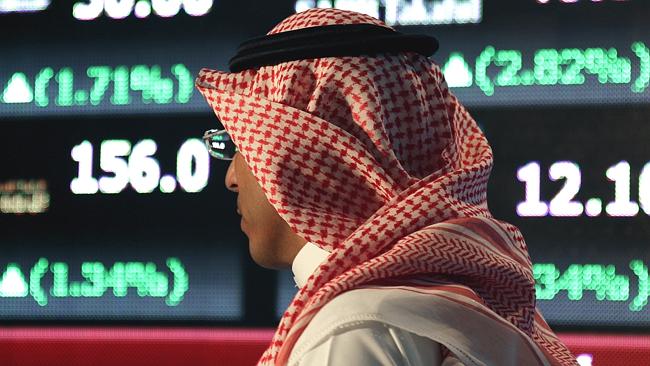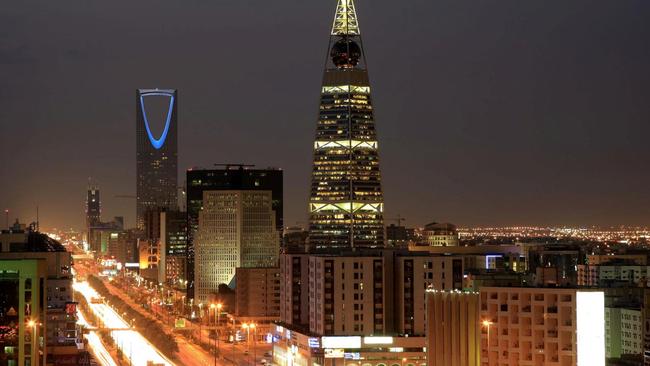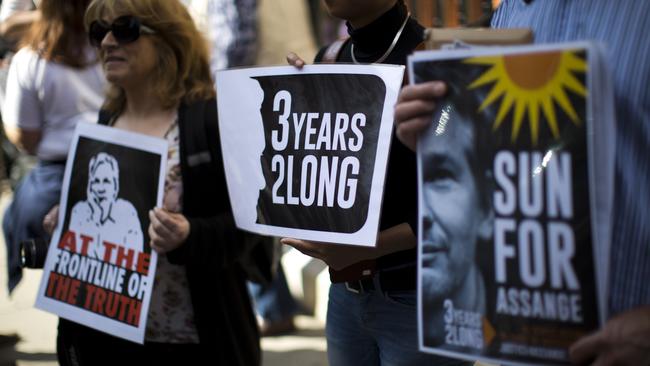WikiLeaks begins leaking more than 500,000 Saudi diplomatic documents
AN UNPRECEDENTED leak of diplomatic documents from Saudi Arabia has lifted the lid on the dirty politics of the secretive kingdom.

AT THE Saudi Embassy in Tehran, diplomats talked about airing the grievances of disenchanted local youth using Facebook and Twitter. At the embassy in Khartoum, they reported anxiously on Iran’s military aid to Sudan.
Meanwhile the Saudi mission in Geneva was stuck dealing with a multi-million dollar limo bill racked up by a Saudi princess and her entourage.
The diplomatic documents published by WikiLeaks Friday are only the first batch of what the transparency group says will be a much larger release, but they’ve already provided an unusual level of insight into the day-to-day of Saudi diplomacy — giving a snapshot of the lavish spending habits of senior royals and the political intrigue percolating across the Middle East.
WikiLeaks has so far published roughly 60,000 documents, of which The Associated Press has only been able to authenticate a handful. But the organisation has a long track record of hosting large leaks of government material and insists the latest batch is genuine.
Saudi officials have not explicitly challenged the authenticity of the documents and Saudi diplomats have not answered repeated requests for comment. However, the Foreign Ministry posted a carefully worded message on its Twitter account early Saturday morning, warning citizens to avoid visiting “any website with the aim of getting a document or leaked information that could be untrue and aims to harm the nation.”
Many of the scores of documents reviewed by AP appear aimed at keeping track of Iranian activity across the region or undermining Tehran’s interests. An undated memo apparently sent from the Saudi Embassy in Tehran made note of what it said was the “frustration of the Iranian citizen and his strong desire for regime change” and suggested ways to publicly expose Iran’s social grievances through “the internet, social media like Facebook and Twitter.” It also suggests “hosting opposition figures overseas, coordinating with them and encouraging them to use galleries to show pictures of torture carried by the Iranian regime against people.”
Saudis also kept a watchful eye on Iran’s friends, real or perceived. One 2012 memo warned that Iran was getting “flirting American messages” suggesting that the U.S. had no objections to a peaceful Iranian nuclear program so long as it had guarantees, “possibly Russian ones.”
Another memo, dated to 2012, accuses the United Arab Emirates of helping Russia and Iran circumvent international sanctions. A third memo — marked “top secret” — makes the startling claim that Iranian fighter jets bombed South Sudanese forces during a 2012 standoff over the oil-rich area of Heglig.
There are many such hard-to-confirm stories in the Saudi documents.
One of the most inflammatory memos carries the claim that Gulf countries were prepared to pay $10 billion to secure the freedom of Egypt’s deposed strongman, Hosni Mubarak. The memo, written on a letterhead bearing only a single palm tree and crossed scimitars above the words “top secret,” quotes an unnamed Egyptian official as saying that the Muslim Brotherhood would agree to release Mubarak in exchange for the cash “since the Egyptian people will not benefit from his imprisonment.”
Although the document is undated, the political situation it describes suggests it was drafted in 2012, when the Muslim Brotherhood appeared poised to take power. Senior Brotherhood official Mohammed Morsi served as Egypt’s president from June 2012 to July 2013, before being ousted by the military.
But it’s not clear the idea of paying the Brotherhood to secure Mubarak’s release ever coalesced into a firm offer. A handwritten note at the top left of the document says the ransom “is not a good idea.”
“Even if it is paid the Muslim Brotherhood will not be able to do anything regarding releasing Mubarak,” the unknown author writes. “It seems there are no alternatives for the president but to enter prison.”
Still, the memo’s existence adds credence to the claim made in 2012 by senior Muslim Brotherhood leader Khairat el-Shater that Saudi Arabia had offered billions of dollars in return for Mubarak’s freedom — something Saudi officials hotly denied at the time.
Amid all the intrigue are other insights into Saudi attitudes abroad — especially their taste for luxury.
Amid a small mountain of administrative documents, the AP found a 2009 invoice for an unpaid limousine bill racked up by Princess Maha Al Ibrahim, which Saudi media identify as the wife of senior Saudi royal Abdul-Rahman bin Abdulaziz Al Saud. The invoice, from Geneva-based Golden Limousine Services and addressed to the Saudi mission there, says the princess skipped town after failing to paying a first instalment of 1.5 million Swiss francs owed to the company and her hotel. When the bill was brought to her attention, “she declared that the amount was too high” and asked diplomats to handle the negotiations over its payment.
When reached by phone on Saturday, Louis Roulet, the administrator of the limousine service, confirmed the document’s authenticity and said he remembered the incident well. The total bill was “far more” than 1.5 million Swiss francs, he said, adding that it was eventually paid in full.
“We don’t work with this family anymore, for the obvious reasons,” Roulet said.
Still, the Algerian-born Roulet was unfazed, saying these kinds of disputes were typical of the Arab customers he dealt with.
“I find this totally normal,” he said.

The publishing more than 500,000 Saudi diplomatic documents to the internet echoes WikiLeaks’ famous release of U.S. State Department cables in 2010. WikiLeaks said in a statement that it has already posted roughly 60,000 files. Most of them appear to be in Arabic.
There was no immediate way to verify the authenticity of the documents, although WikiLeaks has a long track record of hosting large-scale leaks of government material. Many of the documents carried green letterhead marked “Kingdom of Saudi Arabia” or “Ministry of Foreign Affairs.” Some were marked “urgent” or “classified.” At least one appeared to be from the Saudi Embassy in Washington.
If genuine, the documents would offer a rare glimpse into the inner workings of the notoriously opaque kingdom. They might also shed light on Riyadh’s longstanding regional rivalry with Iran, its support for Syrian rebels and Egypt’s military-backed government, and its opposition to an emerging international agreement on Tehran’s nuclear program.
One of the documents, dated to 2012, appears to highlight Saudi Arabia’s well-known scepticism about the Iranian nuclear talks. A message from the Saudi Arabian Embassy in Tehran to the Foreign Ministry in Riyadh describes “flirting American messages” being carried to Iran via an unnamed Turkish mediator.
Another 2012 missive, this time sent from the Saudi Embassy in Abu Dhabi, said the United Arab Emirates was putting “heavy pressure” on the Egyptian government not to try former president Hosni Mubarak, who had been overthrown in a popular uprising the year before.
Some of the concerns appear specific to Saudi Arabia.
In an Aug. 14, 2008 message marked “classified and very urgent,” the Foreign Ministry wrote to the Saudi Embassy in Washington to warn that dozens of students from Saudi Arabia and other Gulf countries had visited the Israeli Embassy in the U.S. capital as part of an international leadership program.
“They listened to diplomats’ briefings from the embassy employees, they asked questions and then they took pictures,” the message said, asking the embassy for a speedy update on the situation.
Another eye-catching item was a document addressed to the interior and justice ministers notifying them that a son of Osama bin Laden had obtained a certificate from the American Embassy in Riyadh “showing (the) death of his father.”
The letter is signed by Glen Keiser, the US consul general in Riyadh and addressed to Abdullah bin Laden on September 9, 2011, about four months after a US raid killed his father in Pakistan. “I have received your request for a death certificate for your father, Usama bin Laden,” Keiser wrote.
Legal experts in the State Department advised that no such document was issued, he said.
“This is consistent with regular practice for individuals killed in the course of military operations.” Instead, Keiser provided Abdullah bin Laden with US court records in which officials confirmed his father’s death and, as a result, dropped a criminal case against him.
“I hope that these US government documents are of assistance to you and your family,” Keiser said.
The bin Ladens are a prominent Saudi business family. The kingdom stripped Osama bin Laden of citizenship in 1994.
Many more of the dozens of documents examined by The Associated Press appeared to be the product of mundane administrative work, such as emails about setting up a website or operating an office fax machine.
The AP was able to partially verify a handful of documents’ authenticity by calling the telephone numbers included in many of them. WikiLeaks spokesman Kristinn Hrafnsson told AP he was confident that the material was genuine.
It is not clear how WikiLeaks got the documents, although in its statement the website referred to a recent electronic attack on the Saudi Foreign Ministry by a group calling itself the Yemen Cyber Army. Hrafnsson declined to elaborate on the statement or say whether the hackers subsequently passed documents on to WikiLeaks.
“As a matter of policy we’re not going to discuss the source of the material,” he said.
The Saudi Embassy in Washington did not immediately return repeated messages seeking comment.
In its statement, WikiLeaks said the release coincided with the three-year anniversary of its founder, Julian Assange, seeking asylum in the Ecuadorean Embassy in London.
Assange took refuge in the embassy to avoid extradition to Sweden, where he is wanted for questioning about alleged sex crimes. Assange has denied any wrongdoing.
— with AFP




